 Part 4: Summer 2011 to Summer 2017 |
 Part 4: Summer 2011 to Summer 2017 |
|
Page 10 This is an idea I experimented with a few years ago, and recently I decided to try it again. These notebooks are called mini 6 ring binders, system notebooks or organizers, or some combination of these names. These are very popular in Japan, and the paper is a standard 3 X 5 inch size. I used cheap sketch paper which I trimmed down from one of my spiral bound pocket sketchbooks. The holes happen to fit perfectly, but for sheets of watercolor paper, I also have a 6 Hole Punch I can keep this notebook in my back pocket and whip it out when I see a subject. If the subject vanishes before I've made but a few squiggly lines, I can just throw away the page with no regrets and have a new page ready for my next subject. Later I can move the finished sketches to another notebook for storage and keep a few of my very best sketches in the back of this notebook to show off to people. There are very inexpensive cardboard or plastic binders out there which are perfect for storing sketches on the book shelf. Small 3 X 5 inch ring notebooks have been around for many years, even in America. The trick is to find one slim enough for the back pocket. The smallest rings I have found were the 8mm diameter rings on a notebook made by Ray May Fuji. It's called the DaVinci
The trickiest part was coming up with a way to protect the pages from palette, and I stumbled upon a very simple idea: A cover made out of a sheet of thin plastic folded in half. I cut the plastic out of a clear soft plastic folder. You can't really see the cover in the photo to the right because when I'm using the palette, I close the cover back on itself, and tuck it out of the way under the palette. The surface of the cover which touches the paint still faces inward, so no paint accidentally gets transferred anywhere outside the cover. To keep the cover in place, I punched holes along the sides so it would attach to the rings. The holes on the bottom half (right half in the photo below) anchor the sheet to the notebook, and holes on the top half (left half in the photo below) have small slits so I can open it easily without unclasping the rings. It actually works well! 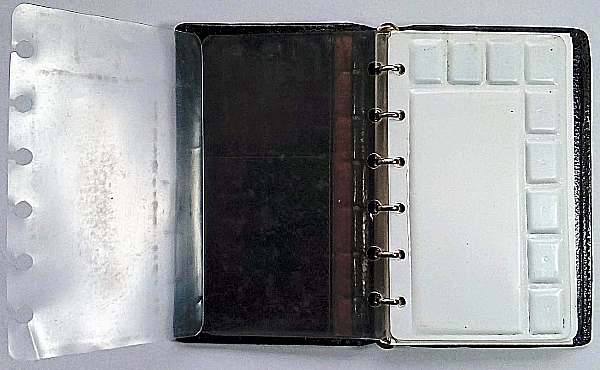 I tried to take a photo to show exactly how it fits in the notebook, but photos of clear objects are difficult, so I also provided a diagram. 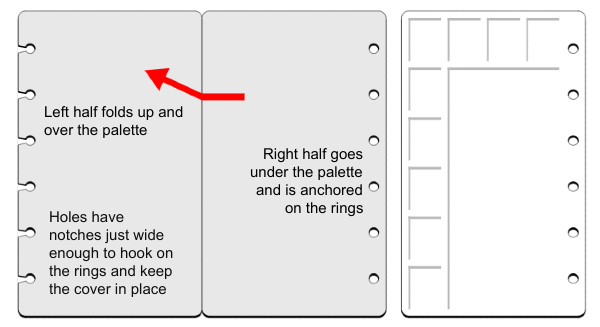 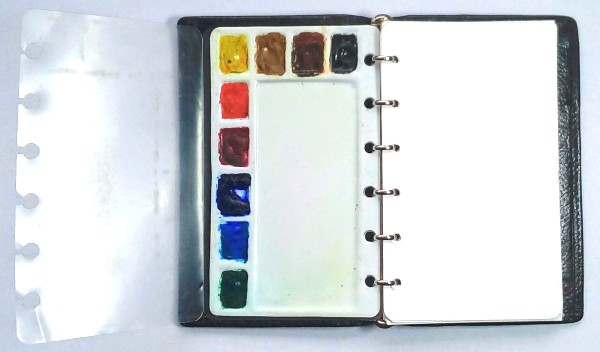 Below are some sketches done on the subway with the 6-ring binder set up. |
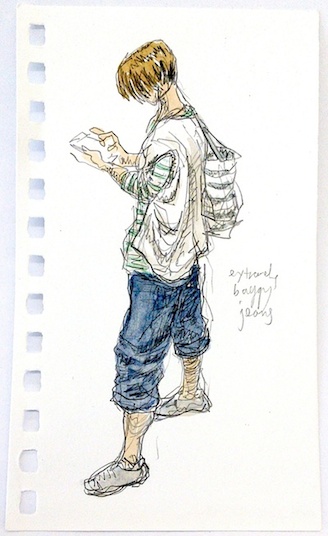 |
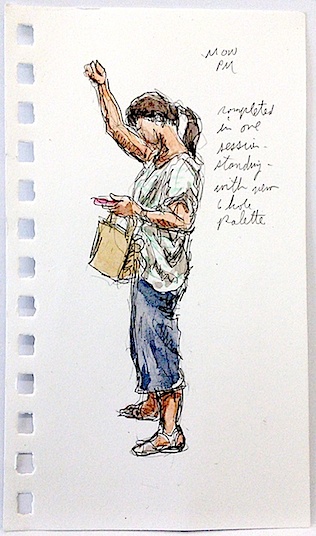 |
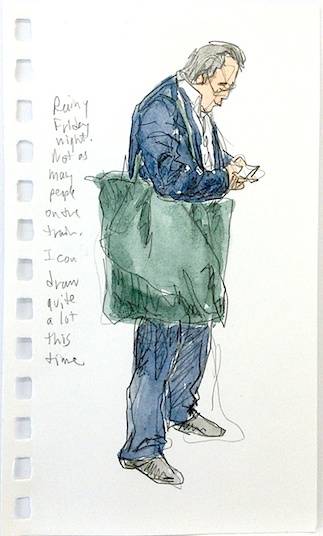 |
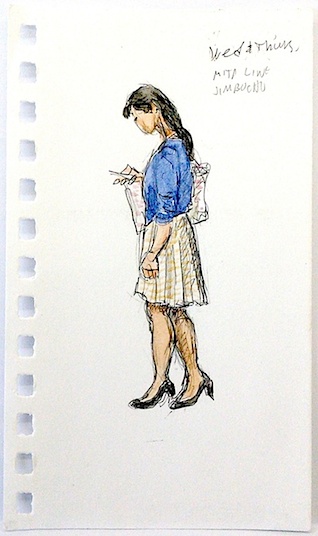 |
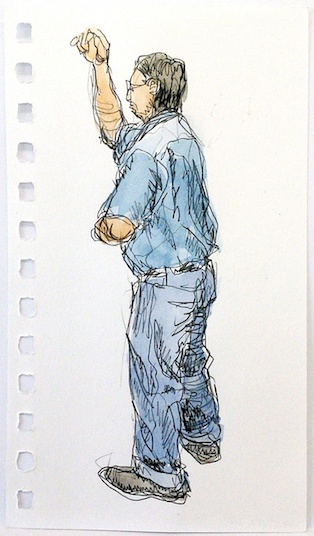 |
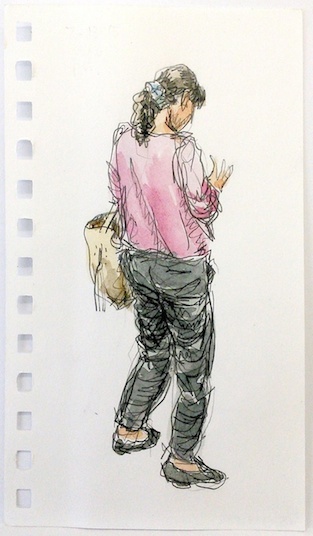 |
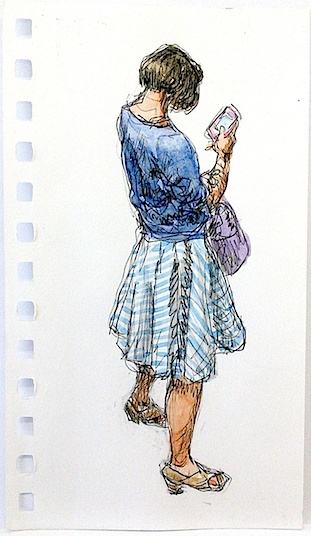 |
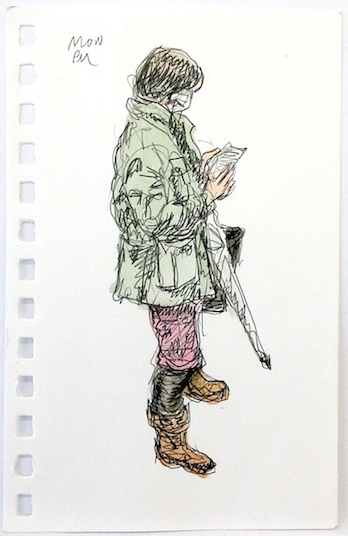 |
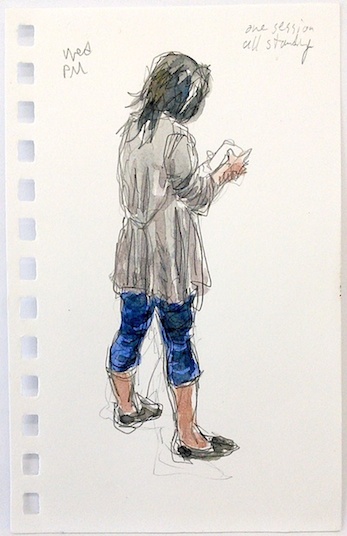 |
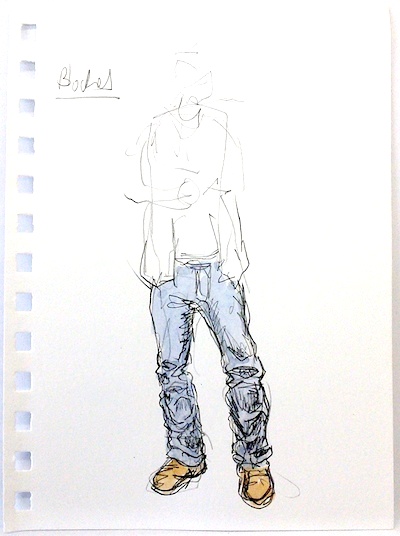 |
|
The past several pages in this section of my online sketchbook reveal a shift in my focus. I used to walk around or even go on trips looking for interesting things to sketch, but recently I have been sketching subway passengers exclusively. That's because I'm more likely to sketch when I'm standing still with nothing else to do. For me, that means the daily train commute. And what is there to draw on the train other than people? I have come to appreciate humans as the highest subject matter for art; God's highest creation, made in God's image. And I do love the thrill of the "hunt," not knowing if I will be able to finish the sketch before the subject moves away or is blocked from view by someone else. These past few years, most of my days are spent at work, but I don't mind going to work because when I don't ride the train, I don't sketch. |
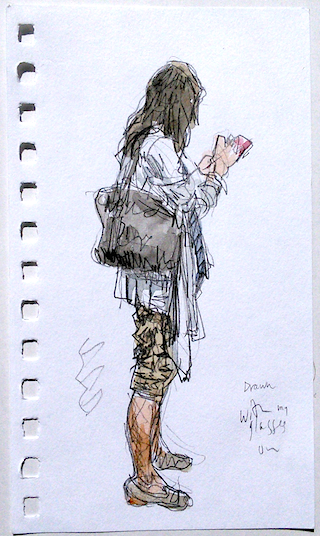 |
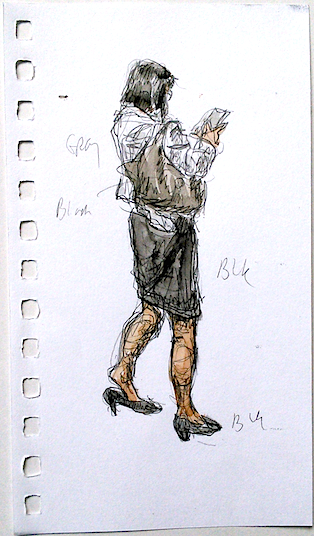 |
|
Now that I have my watercolors right there in the notebook, I try to color every sketch on the spot before I leave the train. But if there is not enough time, I just scribble a few notes so I can add color later, as I did in the sketch above on the right. |
 |
 |
|
You can also see all my spiral bound "butterfly net" sketches on one page in one big collection. This ring binder sketch system seems to be working out very well. I've been at it for a few months now, and have been able to make at least one new sketch practically every time I take the evening train. |
|
Drawing crowds with a dip pen and real brush Now I have a huge collection of people sketches in ring binders so I can add new figures to my ongoing ink project. If I have a moment to add a new figure, but don't have any new pencil sketches in my pocket sketch notebook, I'll just take one from my collection. In the new drawings below, you may recognize some poses from previous drawings. I had tried the large Moleskine watercolor sketchbook Back when I was sketching in pen and ink on-the-spot while standing, I hated the awkward horizontal format of this watercolor Moleskine, but not that I'm using it only when I'm at a desk, I love it. It's fun to fill a horizontal space with lots of people. I also realized that since I'm working at a desk for this phase of my art project, I don't need to use portable tools which have their own limitations. Since they carry their own ink supply, they are not as slim as they could otherwise be, and can be difficult to hold and control. And the ink which is thin for flowing through the narrow channels can feather out on some papers. I love to use a fountain pen and brush pen with Carbon ink when I'm out sketching, but when I'm sitting at a desk, a real brush or dip pen My personal favorite brush is a handmade brush found in a small shop in Tokyo, which has no web site. I also use a Winsor & Newton number 2 Sable Brush |
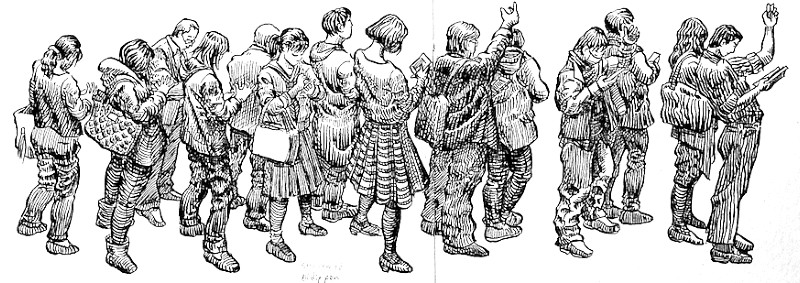 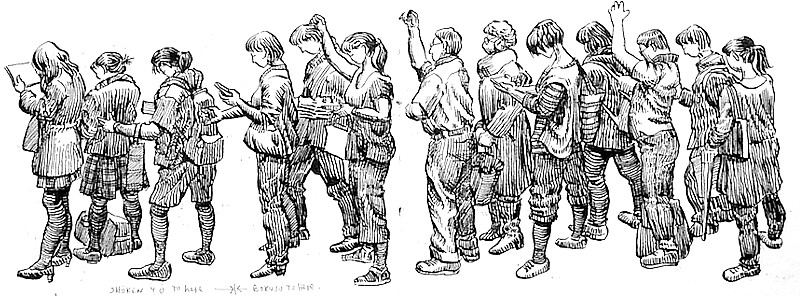 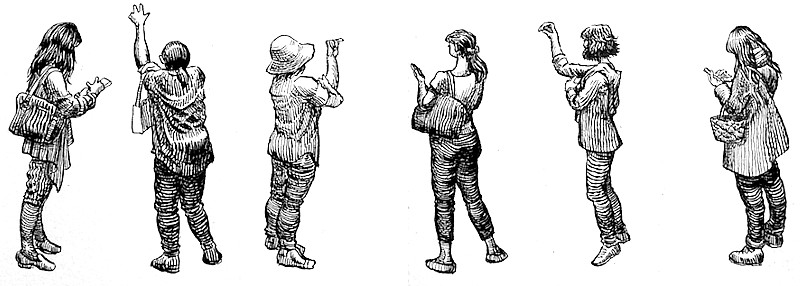 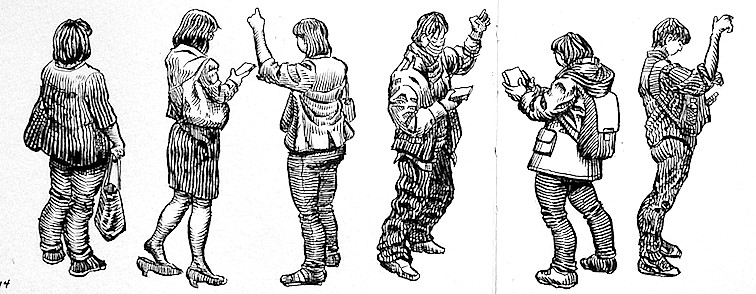 |
|
I have found one pocket sketchbook which was designed for pen and ink and comes in a horizontal format. It's called the Pen & Ink Notebook I already had the vertical (portrait) format, and found that it was no good with carbon ink in a fountain pen because carbon ink feathered out slightly, which had me so dissapointed that I gave a negative review of it in my article about Moleskine sketchbooks. But later I discovered that it's pretty good with heavier drawing ink Then I felt great pressure to hurry and finish my Moleskine before the Pen and Ink sketchbook arrived or risk throwing yet another unfinished sketchbook into storage! I've done that too many times, so I was determined to somehow plow through the Moleskine and complete as many pages as possible -- I was only on page 15 when this occurred to me. Knowing very well my slow pace of adding new sketches, I resorted to the old trick of adding lots of text with only a few sketches. I basically saw it as a quick and sneaky way to fill space. |
 |
|
I've mentioned before that I had decided a while ago to stop adding text to the sketches. But this was an emergency -- I'm trying to save the life of a sketchbook! So I decided to eat my own words and add a few notes about the drawing process, such as what tools I used and what I was trying to acheive. Then I showed my sketchbook to some people who were very impressed by the addition of text. I was surprised. What can I say? It did make the page more interesting to look at, more than pure images. It reminded me of chocolate bars; 100 percent chocolate is OK, but I prefer a combination of chocolate and nuts or or puffed rice some cookie-type stuff. Maybe sketches with text are more exciting than just images after all. So the pages suddenly got more interesting to look at, but the text isn't anything special to read. So I'll just extract the images and share them with you. Well, the first image was too difficult to extract, so I included the surrounding text. |
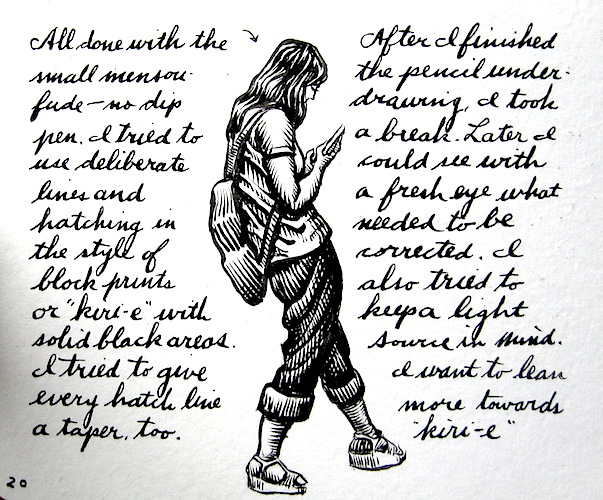 |
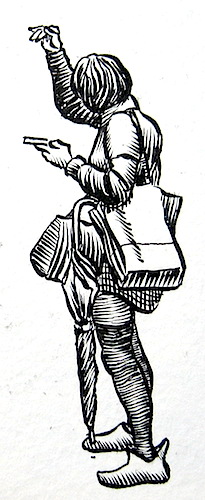 |
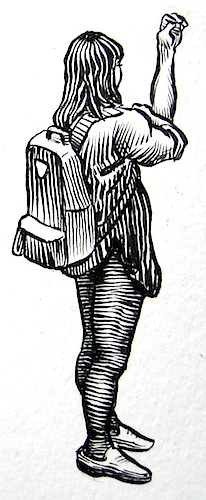 |
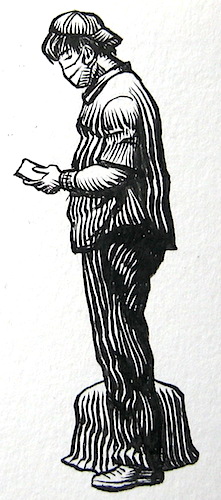 |
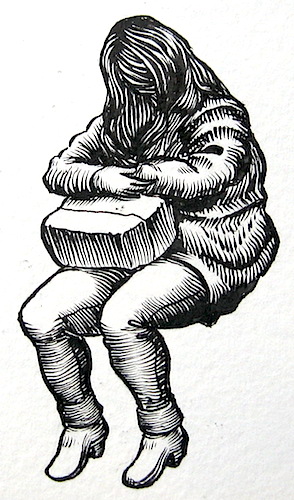 |
 |
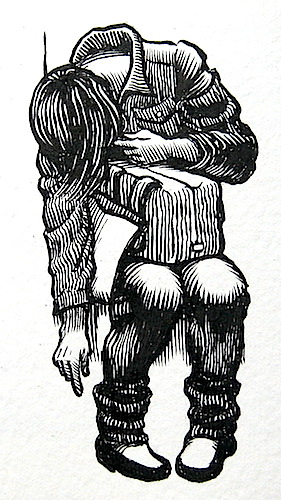 |
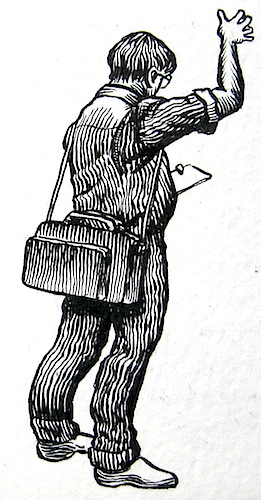 |
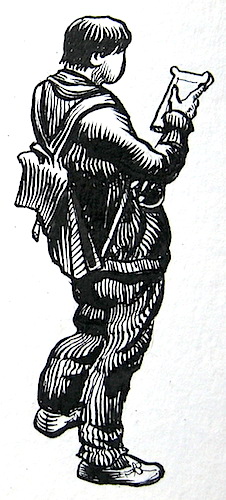 |
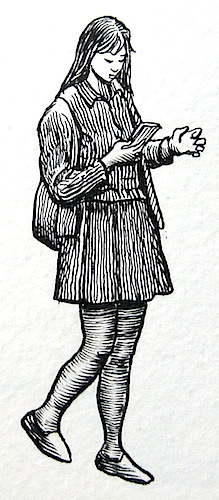 |
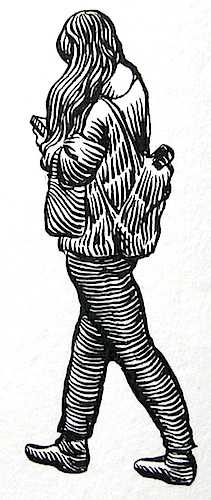 |
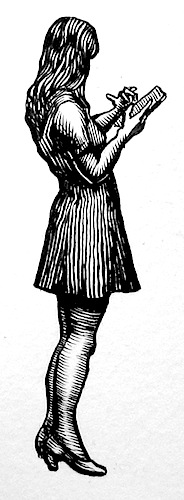 |
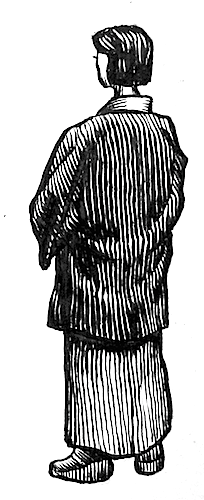 |
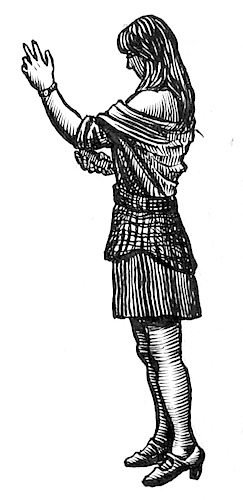 |
|
These tired or distracted commuters have no idea they have been immortalized in ink this way. I wonder if any have seen my web site? The lady in the traditional kimono was a rare find. I've mentioned before that I tend to draw women because I'm attracted to beautiful subjects. After all, I have to observe the model for a few minutes, and pleasant subjects make for a pleasant experience, and the women in Japan seem to make more of an effort to look attractive, while a lot of men apparently don't even think about their appearance. Like the other ink drawings, these were based on the loose pencil and watercolor I did on the evening subway in my ring binder sketch notebook. Well, the one of the sleeping girl was taken from an earlier sketch (which you may have recognized from page 8 on this web site). Here are some of those sketches. Most of them made it into my ink sketchbook. |
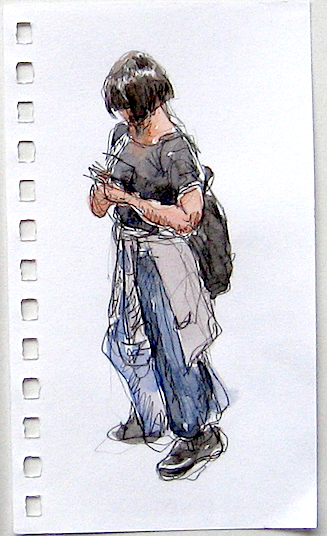 |
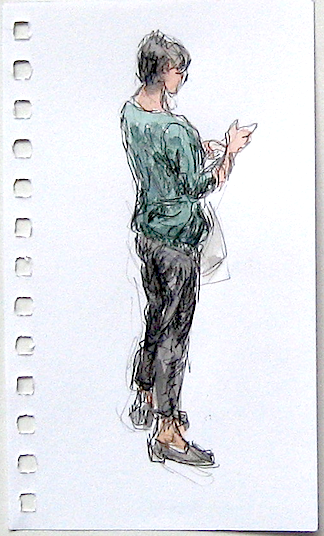 |
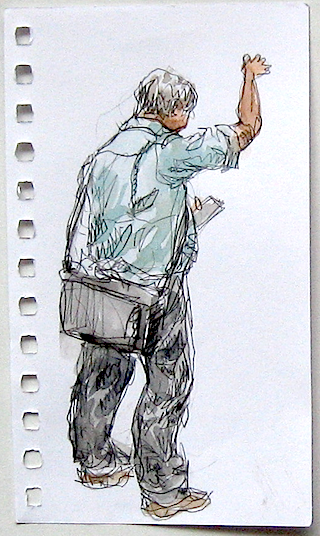 |
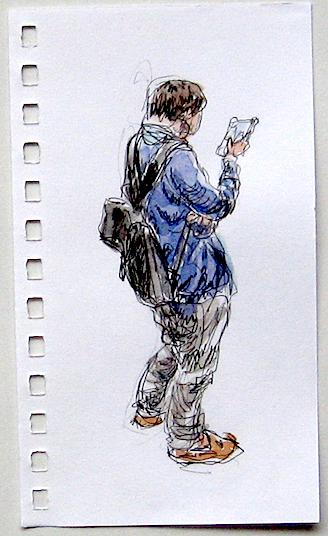 |
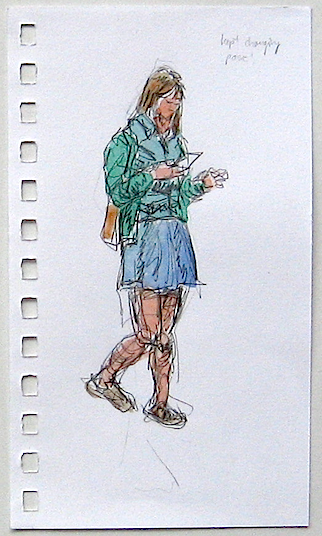 |
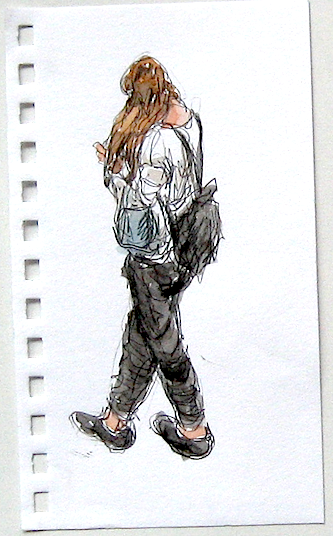 |
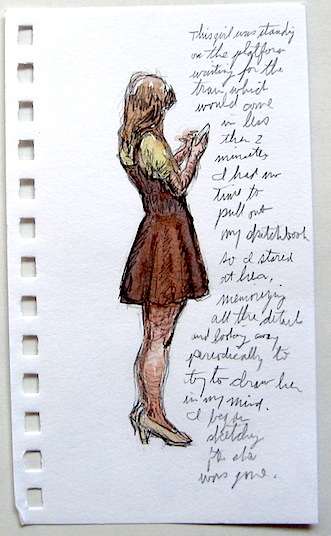 |
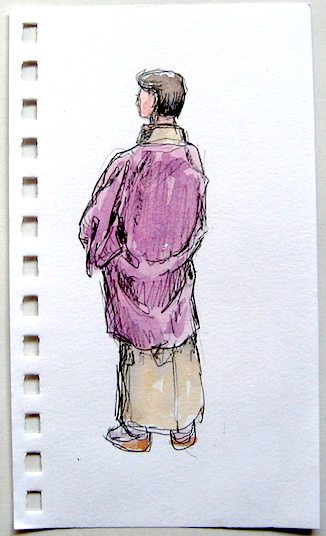 |
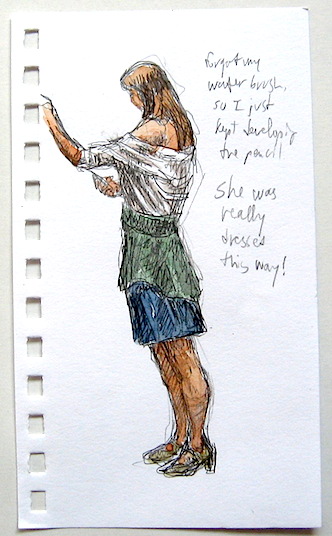 |
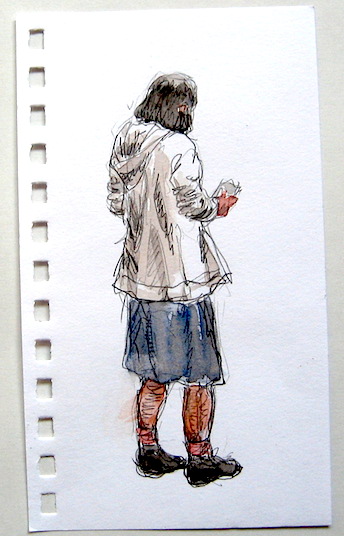 |
|
Since I am adding a new sketch to my ring notebook practically every time I take the evening train, and have been at it for several months, it goes without saying that these are only a small part of that growing collection. It's so gratifying to be able to sketch subjects in both of these styles, loose and rapid pencil and watercolor as well as meticulous pen, brush and ink. Anyway, that Pen and Ink sketchbook finally arrived, and I put away the Moleskine. The first thing I did with the Pen and Ink sketchbook was to bend the covers back, to get the pages to lie flat. Unfortunately, this broke the binding, and there suddenly appeared large gaps between the covers and the pages, and between the signatures, rendering the sketchbook worthless, in my opinion. I confess I threw the Pen and Ink sketchbook in the trash, unused. What a waste. This rash action left me with no pocket size sketchbook for my ink drawings! However, it was around this time that I heard that Stillman and Birn was going to produce a line of softcover sketchbooks in several different formats including pocket size and horizontal. This was fantastic news since I know their paper and binding is high quality. But what would I do in the weeks or months before I could get my hands on one of these new sketchbooks? I did have one sketchbook on my shelf waiting to be used. It was the Stillman and Birn Episilon 5.5 X 8.5 inch hardbound sketchbook |
Next page >> |
 |